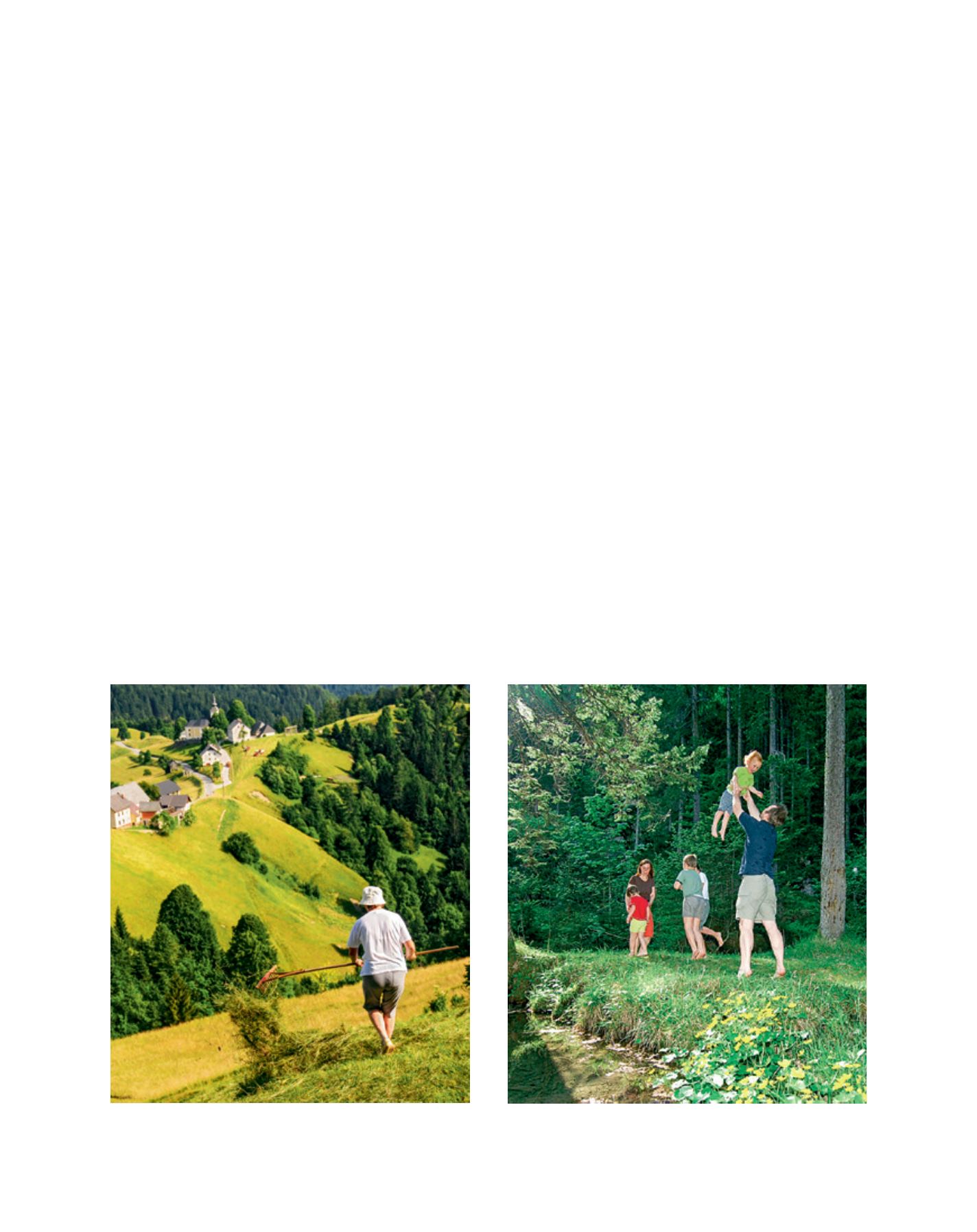

[
] 245
Office of the Republic of Slovenia (Agricultural Census 2010)
and the Slovenian Agriculture Institute, an average agricul-
tural holding cultivates 6.4 hectares of utilized agricultural
area and breeds 5.6 livestock units. Considering that most of
the utilized agricultural land is located in less favoured areas,
the structure of this land is still grasslands and pastures,
which account for more than half (59.2 per cent) of agri-
cultural land, followed by arable land and gardens with 35
per cent and permanent crops with under 6 per cent. The
relation between grasslands and arable land has lately been
decidedly transformed in favour of grasslands. The share of
grasslands in the structure of agricultural land use is almost
twice as high as the average share in the EU-27. Despite the
large share, it is characteristic of grasslands in Slovenia that
they are relatively poorly utilized economically, as exten-
sive grasslands still account for a larger share than intensive
ones. Traditional, extensive farming caused the emergence
of certain types of secondary habitats, which have an excep-
tional importance in the preservation of biodiversity.
Since 2000, processes of increasing specialization and
concentration have, nevertheless, taken place. Moreover,
Slovenia has witnessed a steep increase in the number of
organic agricultural holdings since the late 1990s. In 1998,
41 agricultural holdings were included in control, while the
number had increased to 2,682 by 2012. Despite all this, the
competitiveness of Slovenian farms in comparison to EU-27
remains low because of their small size. The average economic
size of agricultural holdings expressed as standard income
in 2010 was €12,233 (compared with €25,450 for EU-27).
A low level of market orientation is another characteristic
of Slovenia, as only 40 per cent of family farms place most
of their output on the market. A major share of farm prod-
ucts is used or sold directly at agricultural holdings. Due to
specific agrarian structure, the majority of Slovenian farms
cannot survive on agricultural income alone (less than one
fifth can); therefore, they generate income from other sources
on or outside the farm.
According to official statistical data, more than more than
208,000 active working persons pursued agricultural activities
in farm enterprises and family farms in Slovenia in 2010. Their
labour input, together with those who performed seasonal or
occasional work, amounted to 77,012 annual work units (AWU)
or around 8 per cent of all employed persons in Slovenia. As much
as 89 per cent of work in agriculture in 2010 was performed by
family labour. One AWU in Slovenia cultivates 6.3 hectares of
utilized agricultural areas, which is almost three times less than
the EU-27 average. This can also partly be ascribed to the unfa-
vourable natural conditions for agricultural activities.
As far as demographic structure is concerned Slovenia, like
other EU countries, is witnessing a trend towards an unfavour-
able age structure of owners of agricultural holdings, with just
43.4 per cent of farmers being younger than 55 years. Only 4.3
per cent of owners of agricultural holdings are younger than
35, which puts Slovenia among the countries with the small-
est share of young owners of agricultural holdings, and means
it significantly lags behind the EU-27 average (7.5 per cent).
The educational structure in Slovenia is somewhat better than
the EU-27 average, as less than two thirds (64.4per cent) of
owners of agricultural holdings have only practical experience
in agriculture (the EU-27 average is 70.4 per cent), while the
share of those with full agricultural education stands at 8.9
per cent (EU-27 average: 7 per cent).
1
Mowing on steep slopes in Sorica: almost 60 per cent of Slovenia’s
agricultural land is grassland and pasture
Forests are a predominant feature of the Slovenian countryside,
covering almost two thirds of the country
Image: Dunja Wedam
Image: Archive of the Ministry of Agriculture and Environment
D
eep
R
oots
















